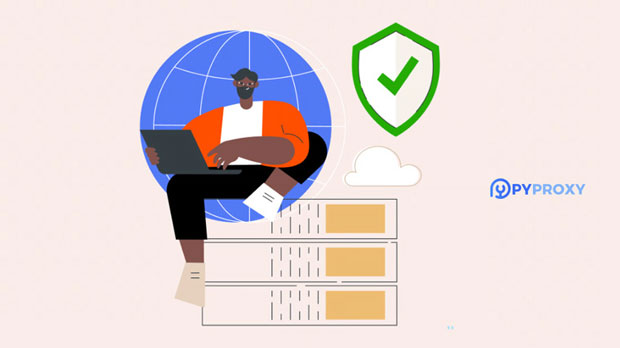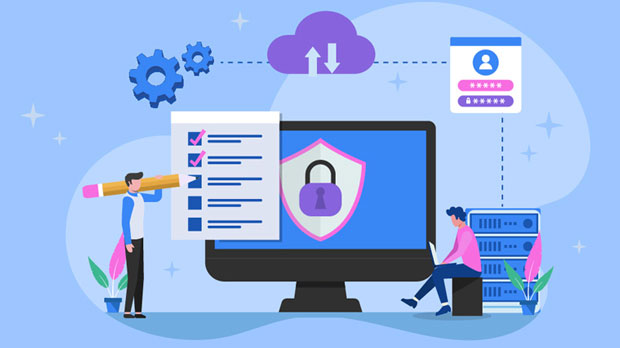How to find quality free online SOCKS5 proxy servers?
Finding a high-quality free socks5 proxy server can be a challenging task, especially considering the potential security risks and connection instability associated with free services. socks5 proxies are highly valued for their ability to bypass restrictions and offer anonymity online. However, not all free services are reliable or secure. In this article, we will explore effective ways to find high-quality free socks5 proxy servers, while discussing the key factors to consider, the potential risks involved, and how to maximize your experience with these proxies. With the right approach, users can find fast, secure, and anonymous SOCKS5 proxies without having to invest in a paid service. What is a SOCKS5 Proxy and Why is it Important?A SOCKS5 proxy is a type of proxy server that facilitates communication between a user's device and the internet. Unlike other types of proxies, such as HTTP or HTTPS proxies, SOCKS5 works at a lower level, forwarding any type of traffic, including TCP and UDP. This versatility makes it ideal for tasks like streaming, torrenting, and bypassing internet censorship. SOCKS5 also provides a higher level of anonymity compared to traditional proxies, as it doesn’t modify the data in any significant way.However, finding a reliable and fast SOCKS5 proxy can be difficult, especially if you're looking for a free option. This is because free proxies tend to have slower speeds, less security, and are often unreliable. Nonetheless, with a little research, users can still find high-quality free SOCKS5 proxies that meet their needs.Key Factors to Consider When Choosing a free socks5 proxy Server1. Speed and PerformanceWhen it comes to SOCKS5 proxies, speed is one of the most critical factors. Free proxies, in particular, are often overloaded with users, leading to slow speeds and high latency. To ensure a smooth browsing experience, it’s essential to look for proxies that offer a fast and stable connection. You can test the speed of the SOCKS5 proxy by conducting simple speed tests, such as pinging the server or checking your internet speed before and after connecting to the proxy.2. Server LocationsThe location of the SOCKS5 proxy server can affect its performance and ability to bypass restrictions. For example, if you're looking to access content from a specific country, you’ll need a server located in that region. Free SOCKS5 proxies may offer a limited number of server locations, which could limit your ability to access certain services or websites. Be sure to check the server list to see if the proxy has servers in the countries you need.3. Security and PrivacySecurity is a major concern when using free proxy servers, as some providers may log your activity or inject malware into the traffic. Ensure the free SOCKS5 proxy service does not track your online activities and uses encryption to protect your data. Although most free proxies are not as secure as premium services, some may still provide basic encryption and protection against malicious attacks.To further improve your security, consider using additional privacy tools, such as a VPN or Tor, in conjunction with the SOCKS5 proxy.4. No Log PolicyOne of the main reasons people use SOCKS5 proxies is to remain anonymous. A strict no-log policy ensures that the provider doesn't keep records of your browsing activity. However, many free proxy services may not offer this level of transparency, which could put your privacy at risk. Always look for proxies that explicitly state their no-log policy and guarantee not to track or store your data.5. Reliability and UptimeReliability is another essential factor in choosing a high-quality proxy. Free SOCKS5 proxies are often less reliable, as they tend to experience frequent downtimes or sudden disconnections due to limited server resources. To find a stable server, it’s crucial to read user reviews and test the proxy’s performance over time. Ensure that the proxy you choose is consistently online and can handle long periods of use without interruptions.6. Usage RestrictionsMany free SOCKS5 proxies come with limitations, such as bandwidth caps or restrictions on the number of simultaneous connections. These limitations can severely hinder your experience, particularly if you need to use the proxy for streaming, gaming, or other high-bandwidth activities. Before choosing a free proxy, review the terms and conditions to ensure there are no hidden restrictions that could limit your usage.Where to Find Free SOCKS5 Proxy ServersFinding free SOCKS5 proxy servers can be tricky, especially since many services are unreliable or unsafe. However, there are several places where you can look for high-quality free proxies.1. Online Proxy ListsOne of the most common places to find free SOCKS5 proxies is online proxy lists. These lists aggregate publicly available proxies and display information such as server location, uptime, and speed. However, it's essential to approach these lists with caution, as many proxies listed on these sites can be slow, unreliable, or even malicious. Always double-check the source and ensure the proxies have been tested for performance and security.2. Community Forums and WebsitesMany internet forums and online communities share free proxy servers. These platforms often have dedicated threads or sections where users contribute new proxy IP addresses. The advantage of finding proxies through these communities is that they often include user reviews and feedback, allowing you to gauge the quality and reliability of the proxies. However, it's still important to be cautious and verify the proxies yourself to avoid any security issues.3. Proxy Search EnginesSome search engines specialize in finding and indexing proxies. These search engines can help you locate free SOCKS5 proxies from various sources, including individual users and public proxy databases. You can filter the search results by location, speed, and security, making it easier to find a high-quality SOCKS5 proxy. Again, it’s important to perform your own tests and read user reviews to ensure that the proxies are safe and reliable.4. Open-Source Proxy ProjectsSome open-source projects provide free SOCKS5 proxies as part of their services. These projects are often created by enthusiasts or privacy advocates who want to share proxies with the community. Open-source proxies may offer better transparency and security compared to commercial free services, but they may still have limitations regarding speed and availability.Risks of Using Free SOCKS5 ProxiesWhile free SOCKS5 proxies can be appealing, they come with a range of risks and potential downsides. Some of the most common risks include:1. Data TheftFree proxy providers may track your online activity and sell the data to third parties. This could lead to privacy violations or identity theft. Always read the privacy policy of the proxy provider and ensure they do not store your personal data.2. Malware and VirusesSome free SOCKS5 proxies may inject malware or viruses into your traffic. This could lead to data breaches or compromise your device’s security. It’s crucial to use antivirus software and be cautious when using free proxies from unverified sources.3. Unreliable PerformanceFree proxies are often slow and unreliable, which can result in frustrating experiences, especially for tasks that require a stable connection. Frequent disconnections and low bandwidth can render free SOCKS5 proxies unsuitable for demanding activities like streaming or online gaming.ConclusionFinding high-quality free SOCKS5 proxies requires patience, research, and a careful approach to avoid risks like poor performance and security breaches. While free proxies can be useful for basic tasks like bypassing geo-blocks or maintaining anonymity, they often come with limitations. By considering factors like speed, security, and reliability, users can improve their chances of finding a good free SOCKS5 proxy that suits their needs. However, if privacy and performance are critical, investing in a premium SOCKS5 proxy service may ultimately be the best option.
2025-01-07

























































